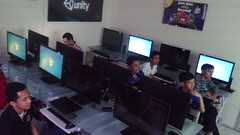
- Read An Opinion On:
- Music School Sydney Australia
Submitted by: Artur Victoria
The identification of job-definition problems and attempts to redefine positions so that they meet the needs of the organization (top manager) and of the individual is a key part of organization planning, and it is by no means simple. An analysis of a position usually leads to a redefinition. Even the most efficient and effective organizations need to improve job definitions. Before addressing specific techniques for job design, it might be of value to consider some of the underlying philosophies of those techniques.
The job of manager should not only involve supervising the work of others but should also involve a healthy number of unique duties-its own contribution to the organization.
The job should contain elements of real responsibility and decision – making, as distinguished from a mock participation often termed a sense of responsibility. Jobs should not be structured so precisely that managers often must authorize what others develop and develop what others authorize.ao Job definitions should take into account the human needs of managers. People need more than creature comforts. They need jobs that allow them to achieve some of their own goals, to receive recognition for their work. to grow in their occupation or profession. Jobs should not restrict normal human ambition.
If the assumption is made that the typical manager is interested in achieving objectives, that he is willing to take at least moderate risk to attain them, that he wants to be able to measure how well he is doing, and that he wants to be on a winning team, the problem of goal between the individual and the organization is reduced considerably. Jobs are then defined not so much in terms of what the manager does as what the manager is expected to accomplish-the results to be achieved plus the obstacles to be overcome.
Traditional job descriptions do little more than outline what the job was on the day that the description was written or what someone thought it should be. They outline tasks, are past oriented, and do not encourage innovation. Less static job descriptions are based on future-oriented goal setting. Such orientation has proved useful to managers in several types and sizes of organizations.
A good job definition is future oriented. It begins with an identification of objectives to be achieved and obstacles to be overcome. For the members of top management, the major hurdles are usually the general obstacles to corporate growth. At lower levels in the organization, both goals and obstacles that define the job become more specific, detailed, and short in nature but still must focus on the overall corporate objectives. At least at the management and supervisory levels, the development of position definitions that are objectively oriented lessens the need for traditional job descriptions.
To effectively determine objectives for a job, it is important to:
(I) Identify the broad areas, in which results are needed,
(2) Determine how progress and success will be measured, and
(3) Let the actual setting of objectives then flow naturally, based on the measurement to be used.
Measures are necessary to recognize the various levels of performance and any changes in performance that may occur. In nearly every area of business, generally more measures can be identified than are needed. Typical measures are budgets, ratios, reports, external standards, or traditional norms.
Goals are statements that specify the condition that will exist when planned effort has been successful. They are concise, easy to understand, measurable, attainable, acceptable to the organization, and time related. Goals in each area where results are needed should be set so as to address the ongoing (operational) part of the job, areas in which innovation is needed, and areas in which problems must be solved.
One of the key difficulties that managers and employees have had in the past has been the determination of what the term well done means. Measures can, of course, help to define job quality. Beyond their use, managers at all levels can make agreements with subordinates about what jobs entail and the level of quality expected on the job. The type of work expected for individual objectives should be stated in specific terms, i.e., average, above average, or outstanding. The manager who is working toward the achievement of goals then knows at all times not only whether progress is being made, but how well the job is being done.
About the Author:
sites.google.com/site/cliptheschoolbeginning/sites.google.com/site/arturvictoriasite
Source:
isnare.com
Permanent Link:
isnare.com/?aid=675089&ca=Business+Management